При покупке в США к машине идет «Window Sticker» — это такой листик с информацией об опциях, расходе и цене. Часто лежит в бардачке или книге.
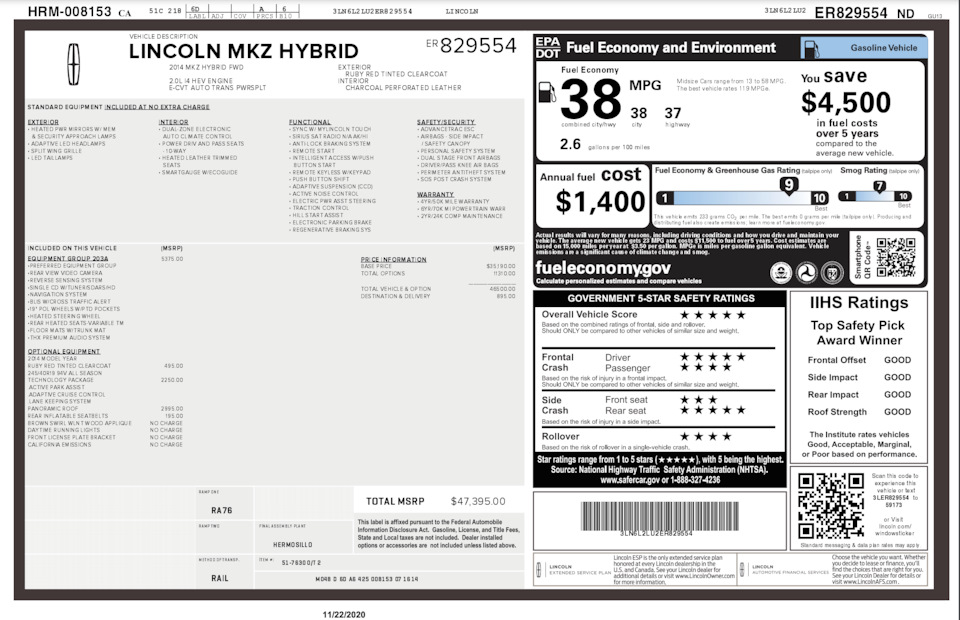
1. Самый крутой вариант! Получить абсолютно бесплатно полный Window Sticker на авто из США можно ТУТ. Вводите VIN и E-MAIL. Стикер должен прийти на вашу почту. Но бесплатно работает далеко не всегда. Бывает долго грузится, потом обновляешь страницу, вводишь данные заново и только тогда присылает.

Если не получилось получить бесплатно, этот же сервис предлагает пакет из 5 стикеров за 5$, что очень дешево.
Имейте ввиду, что в этом случае вы покупаете подписку и каждый месяц с вас будут снимать 5$! Надо им писать чтобы отменить эту подписку.
Upd 10.12.21 из комментариев
“подписка стоит 50 баксов, а 5 баксов это разовый стикер, не снимает каждый месяц (проверенно уже многократно) ))”
—————————————————————————————————————
2. На американском форуме нашел сайт, который дал частичную информацию по комплектации моего lincoln абсолютно бесплатно. Так же доступны: Ford, Mercury, Chrysler, Dodge, Jeep Window Sticker. Но у меня получалось пробивать не все VIN коды.
Большое удобство сайта в том, что дает полную расшифровку цветов, опций, пакетов комплектаций и так далее по конкретной модели авто, например:

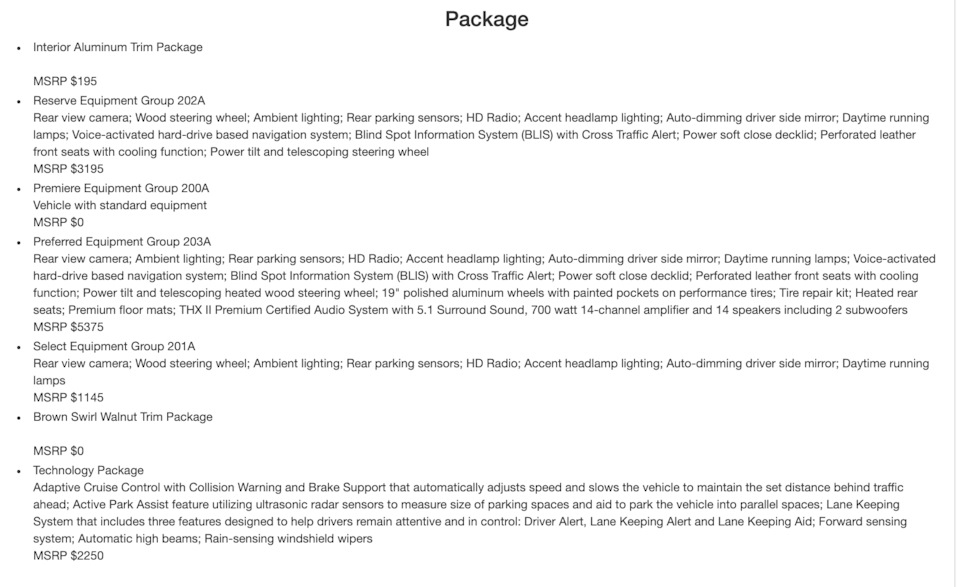
Нужно ввести vin, и, если повезет, будет бесплатный quick window sticker, который содержит информацию о комплектации тачули. Мне повезло и я увидел заводскую комплектацию.
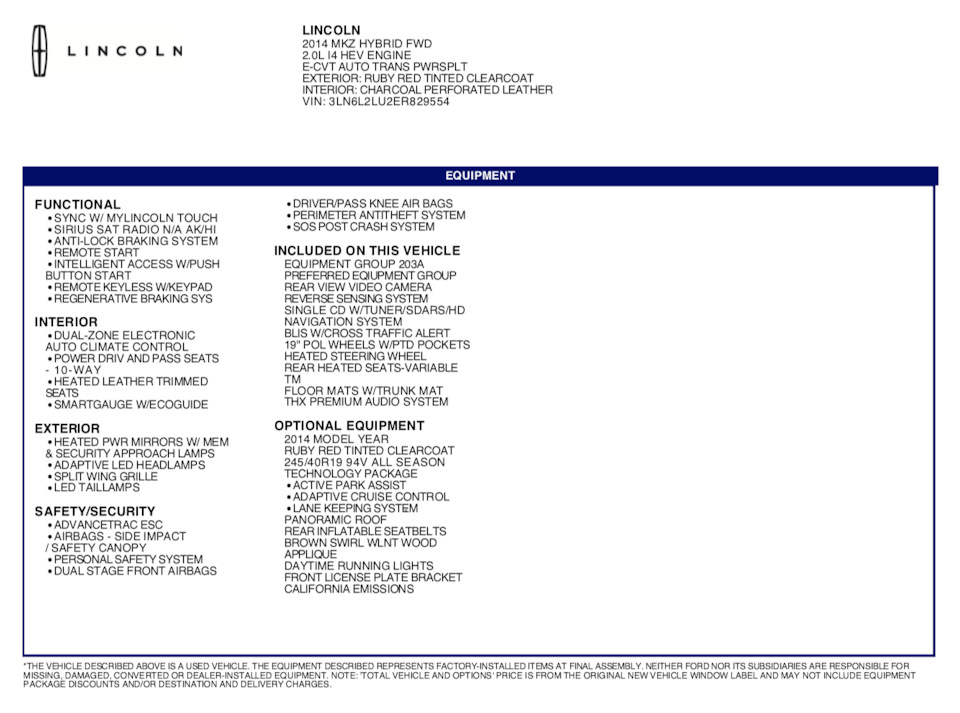
—————————————————————————————————————
3. Еще мой товарищ FAQ1, так же владелец гибрида mkz, показал ссылку для пробива комплектации по VIN
Для примера ссылка на мое авто.
—————————————————————————————————————
4. Вот еще отличный ресурс, чтобы узнать комплектацию любого авто по VIN.
—————————————————————————————————————
5. Если не помогло, можно купить один Window Sticker за 4$ ТУТ.
Get your window sticker using VIN, license plate, or year, make, and model information. Our comprehensive coverage includes all manufacturers, various years, and all vehicle types. Discover your car’s features, original equipment, MSRP, and more!
Whether you drive a car, truck, or motorcycle, our automotive window sticker lookup tool provides access to original stickers for all vehicle types. View features, find sticker price by VIN, and more.
Compare our window sticker with competitor and see the difference.
A study by J.D. Power found that 43% of car buyers use window stickers as a source of information when researching vehicles online.
One report by AutoTrader revealed that 61% of car shoppers said they are more likely to contact a dealer if the online listing includes a window sticker.
A research by Cox Automotive showed that window stickers can improve the conversion rate of online leads by 25%.
Getting an original window sticker by VIN reveals the vehicle’s exact features, specs, and options, helping you understand its true value and make an informed purchase. It’s a quick way to ensure transparency and confidence in what you’re buying.
Our database includes the original build information of classic cars (pre-1981) with non-standard VINs or serial numbers, ranging from 5 – 14 digits. If you are looking to restore a classic beauty to its original form, the classic car build sheet is just what you need.
Make your dealership stand out with our customized and branded car window stickers. These stickers provide essential vehicle information, making sure customers are well informed, while also promoting your brand.
By adding your logo and colors to window stickers for cars, you create a professional look that builds trust with customers.
Branded car window stickers help make your dealership stand out by displaying your logo & colors, showing that you are a reliable business. This professional look boosts customer confidence and makes your cars easier to recognize, keeping your dealership top-of-mind.
Customized stickers highlight specific details like unique features, financing options, or special promotions. This personalization engages customers and encourages action. Customized stickers also reflect your dealership’s personality, making it more relatable and appealing.
- What Is a Window Sticker and What Information Is On It?
- What Is A Window Sticker On a Car?
- What Information Can You Find
From A Car Window Sticker? - What Is a VIN?
- How to Get a Window Sticker From a VIN Number
- Car Window Sticker Frequently Asked Questions
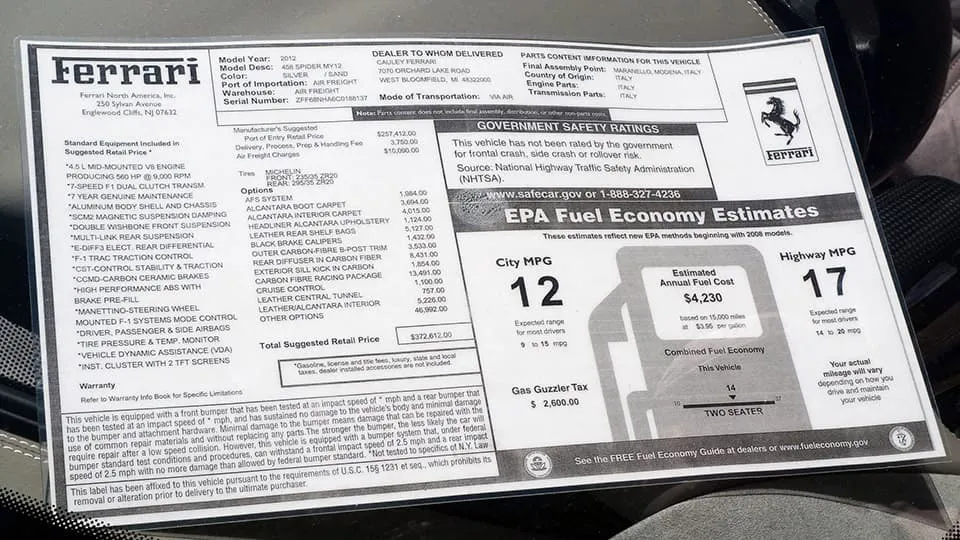
Let’s take a look at the origin of window stickers, what information they contain, and how that information can help you before finalizing a vehicle purchase.
Car window stickers are large, generally colorful labels put on vehicles that are for sale. These stickers are placed there by a car dealership and contain various pieces of information pertaining to the vehicle. The stickers are also referred to as «Monroney stickers», named for the U.S. senator who helped craft the law that created them.
These labels were first made in the 1950s as a way to combat arbitrary price changes amongst car dealers. Oklahoma senator Mike Monroney sponsored the legislation known as the Automobile Information Disclosure Act of 1958, which set out the requirements for what information these stickers would display.
In the most recent update to car window stickers, legislators mandated in 2013 that all cars made after that year would need Monroney labels specifying whether the vehicle had alternative fuel or propulsion requirements. Any electronic vehicles, plug-in hybrids, hydrogen fuel cell vehicles, flexible-fuel vehicles, and natural gas vehicles would require this updated label.
Car window stickers show several essential pieces of information, including:
- Model Information And Standard Equipment
- Optional Vehicle Equipment
- Federal Safety Information
- Destination Charge and MSRP
- Fuel Economy and Environmental Information
- Parts Content Data and Addendums
- Warranty Info
- Shipping and Manufacturing Data

Every vehicle you purchase from a dealership should have a Monroney sticker. Not only are these required by law, but the information contained within this label is necessary for determining certain factors related to the car buying process.
You can use a Monroney sticker to match the car to its serial number and ensure everything fits with the associated paperwork. Make sure to check all the information on the label carefully; to do this, you need to understand what each section of the sticker means.
Model Information And Standard Equipment
A large section of the window sticker will be taken up by information about the car’s standard equipment. This is also where you can find the vehicle’s serial number, make and model, as well as the interior and exterior color scheme.
You can use this information to help verify the car matches the paperwork. For example, if the sticker says the car is painted black but you can clearly see it is white, bring this up to your car dealer.
Optional Vehicle Equipment
Optional equipment will usually increase the price of the vehicle you intend to purchase, and the window sticker will show you what the dealer claims is installed. Make sure to check through these items carefully and confirm each feature you are paying for has been installed on the vehicle.
Many different pieces of equipment qualify as optional, including:
- Upgraded sound systems
- Bluetooth connectivity
- Automatic braking systems
- Navigational system
- Autoplay
- Tire pressure monitor
- Multi-zone climate systems
- Surround view cameras
- Temperature-controlled seats
- Wi-Fi hotspot
- Blind spot early warning system
- Sun or moonroof
Optional additions can also be more traditional equipment, like new tires, window tint, or upgraded rims. Accessories like this will likely be placed in a separate column on the Monroney label so you can confirm them item by item. Check this column carefully, and make sure that the car only comes with the equipment you require; dealers will often add extraneous items to raise the price artificially.
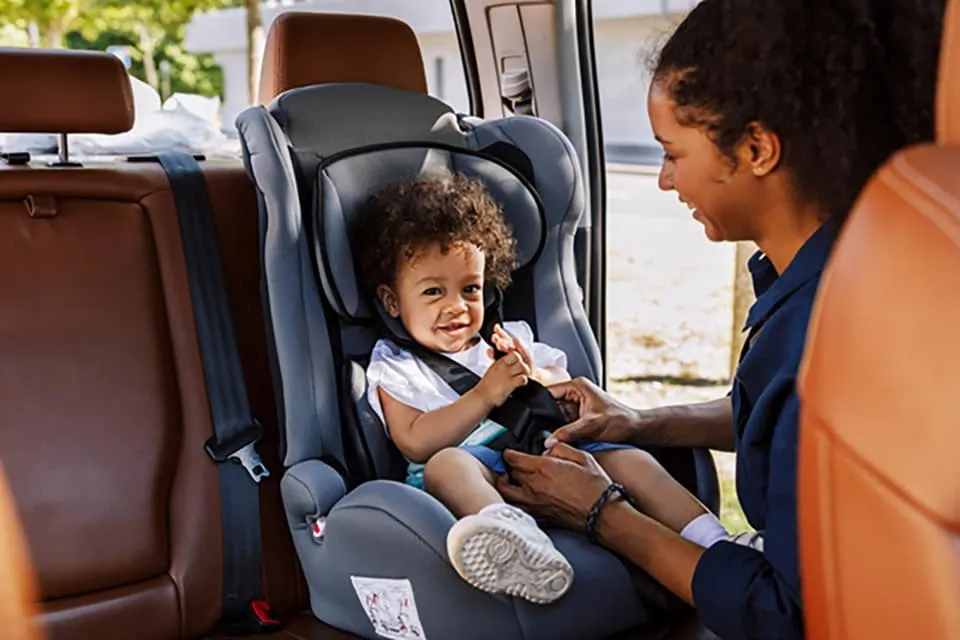
Federal Safety Information
Part of the window sticker will be taken up by a section detailing safety ratings. Created by the National Highway Safety Administration (NHTSA), these ratings cover the safety capabilities of the vehicle in three impact categories: frontal, side, and rollover. Each will have its own individual rating, and another section will have the overall average of the three displayed above.
Check to see that the car has the proper safety rating for your needs. Those with families likely want a car with better safety ratings so that they can be protected in the case of an accident. Ensuring the sticker matches the vehicle, and making sure that the safety ratings are accurate, is vital to guarantee the safety of you and your loved ones.
Destination Charge and MSRP
The destination charge is the buyer’s part of the cost incurred by delivering a vehicle to a dealership. Transporting the car from its manufacturer or assembly plant costs money, and you will share that equally with the dealer. This will be listed separately on the Monroney label from the manufacturer’s suggested retail price.
The manufacturer’s suggested retail price, or MSRP, is the cost assigned by the manufacturer to the car. The MSRP is what manufacturers recommend dealers sell the vehicle for, but some dealers will charge more or less depending on incentives, discounts, equipment, and other factors. For example, if the car model in question is in high demand, dealers will charge extra to balance that supply and demand.
Fuel Economy and Environmental Information
In the upper right corner of the window sticker, you should see the environmental protection agency’s estimation for the vehicle’s fuel economy. The fuel economy is a value referring to the number of miles a car can travel on a given amount of fuel. This number is usually represented by miles per gallon, or MPG, in gas-powered vehicles and miles per gallon gas equivalent, or MPGe, for electric cars.
This section will also show what the greenhouse gas rating and annual fuel cost estimates are. If the car is an electric vehicle, there will be information related to charging costs, estimated charge times, and anything else related to EVs specifically.
Warranty Info
Every Monroney sticker should have the car warranty information clearly listed. A car warranty is a vehicle service contract where the manufacturer agrees to fix broken or defective parts caused by the factory. Depending on the defect, you should be able to get these parts repaired or replaced for free.
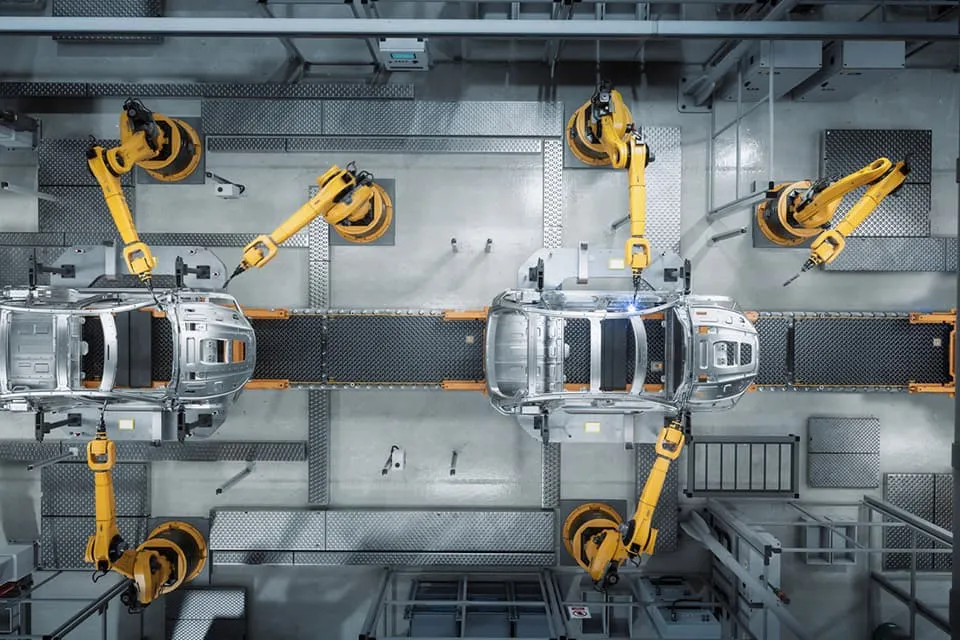
Shipping and Manufacturing Data
This section will show the location where the vehicle was manufactured and where its central components were shipped from. This part of the Monroney label will also feature location data about different places the car has been delivered to.
You’ll want to check this section for abnormalities, but you don’t need to worry too much. If the delivery info and dealership don’t match, that isn’t necessarily a red flag; dealerships often trade new cars amongst themselves to match customer demand.
Parts Content Data and Addendums
This section is designed to let you know how many of the car parts were manufactured in the United States. If the parts were made outside the U.S. this area of the Monroney sticker would show the countries those parts originated from. It will also show the vehicle’s final assembly point.
The addendums section is for any mark-ups, also known as a dealer market adjustment. A dealer market adjustment is an addendum some dealerships add to increase the price of a car based on demand. This label section will also show any other additional charges, which can be added for various reasons. The reason additional charges were added must be listed by law, so check this area if you think you are being charged unnecessarily.
All the relevant information contained on a window sticker can be derived from the VIN using a VIN decoder tool.
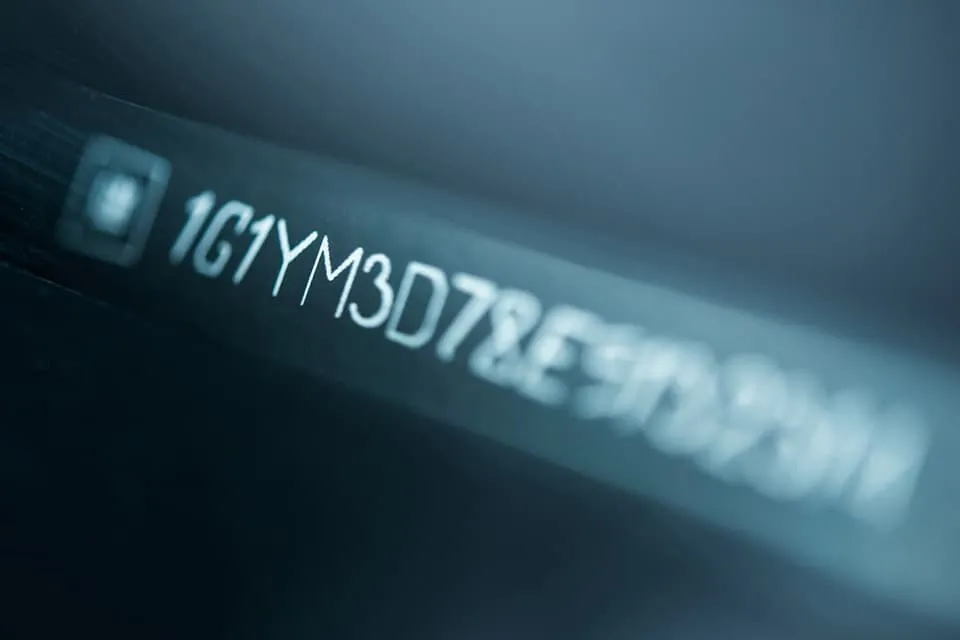
A VIN, or vehicle identification number, is a 17 character combination of numbers and letters that serves as your vehicle’s serial number. You can use your VIN for several different purposes, including looking up the information you would normally find on a Monroney window sticker.
No two VINs (within a set multi-decade time range) can be the same, so your car’s VIN will be completely unique. Much like a window sticker, a VIN will contain numerous important details about your vehicle, including:
- The manufacturer
- The location the car was built
- The car’s brand
- Trim, engine size and type
- A manufacturer verification code
- Country of origin
You can usually find the VIN number on the driver’s side dash in the form of a small engraved metal plate. It may also be on the inside of the driver’s door, near where the door latches closed. The issue comes when you haven’t purchased the vehicle yet; some dealers may not allow you in the car to find the VIN, which may prevent you from using it to look up the window sticker information.
A VIN check can provide all the essential details about your potential purchase. Without these details, you may not be able to verify some aspects of the car’s paperwork. This makes you vulnerable to scammers, and you could end up purchasing a damaged or stolen vehicle.
You may get a window sticker from a VIN Number in the following way:
- Locate Your VIN: To get started, you must have your Vehicle Identification Number (VIN) handy. The VIN serial is typically printed on the driver’s side dashboard and is visible through the windshield. The VIN may also be printed on the driver’s side door jamb or in your vehicle’s registration and insurance documents.
- Use the Manufacturer’s Online Tool: Many vehicle manufacturers, such as Ford, Toyota, and Honda, provide online tools that car owners may use to pull their window sticker information from their databases.
- Enter Your VIN and Retrieve the Sticker: Regardless of the car manufacturer, online tools for retrieving window sticker information function similarly. To use any of the tools:
- Visit the appropriate website of the car manufacturer
- Navigate to the VIN search or Window sticker search tool page of the car manufacturer website
- Enter your VIN in the designated field.
- Review the details of your vehicle’s window sticker.
- Download or print the sticker for your records.
For a detailed, step-by-step guide on retrieving window sticker information via VIN, see the window sticker page of the Detailed Vehicle History website.
What Is A Window Sticker On a Car?
A car window sticker, also known as a Monroney label, is a sticker placed on the window of cars put up for sale. These labels contain data related to the vehicle, including information about the model, equipment, fuel economy, safety, warranty, manufacturing, and price.
Why Are Window Stickers Called «Monroney Labels»?
Car window stickers are sometimes referred to as «Monroney Labels» due to the man responsible for creating them, Oklahoma state senator Mike Monroney. Monroney sponsored the legislation known as the Information Disclosure Act of 1958, which required dealers to include these stickers and regulated which information the labels would contain.
Why Do Cars Have Window Stickers?
Vehicles sold in the United States are required to have window stickers by law. This is due to the Information Disclosure Act of 1958, which was passed to combat the rising frequency of fraud in the automobile sales industry. The stickers as a way to combat arbitrary price changes placed by car dealers, so citizens could get a fair deal on their automobile.
How Do I Remove The Sticker From The Window?
While some car window stickers will come right off or be placed in a plastic protective coating, some tips to remove any adhesive sticker from your car window include: Try a window cleaner spray to loosen up the adhesive material, and use a sharp blade like a razor to slowly chip away at the sticker. Rubbing alcohol can also help melt the glue, as well as ice or WD-40. Be careful when scraping at the sticker, as this could damage your windshield.
Where Do You Find A Car Window Sticker?
A window sticker should be displayed prominently in a car’s window. There is no regulation to where the sticker can be placed, so it may be in the driver’s side or passenger side window. If you don’t see the sticker displayed clearly, ask a staff member at the car dealership where you can find it.
How To Get Window Sticker?
A car window sticker should automatically be provided with any new vehicle being sold in a dealership. If for some reason a vehicle you’ve purchased does not have it, you can find your window sticker with a label lookup service. All you need is the vehicle’s VIN, which can be found with a VIN lookup.
Can You Look Up A Window Sticker With A VIN?
You can look up a window sticker with a VIN number, but you may need to look up the VIN first to accomplish this. GoodCar provides lightning-fast VIN lookup and can find a wide variety of details about any vehicle you may be considering for purchase.
We can find recalls, residual value, and comprehensive vehicle history reports for you at the click of a button. So if you want to find your VIN and get that window sticker information, let us help. Try GoodCar today!


Verify a car’s original equipment, factory installed options, and pricing
Is your window sticker available? See which car brands we cover.
How will a window sticker help you buy or sell a car?
iSeeCars Window Stickers for new or used cars recreate the original window sticker, which shows much more than price. You can see the original engine, transmission, color, standard features, optional equipment and packages along with the manufacturer’s MSRP, safety scores and fuel economy ratings when available.
Getting a window sticker lets you check for missing or inaccurate factory options – and that helps you verify vehicle information and land on a fair price when you’re buying or selling a car.
What Is an iSeeCars Window Sticker?
|
An iSeeCars Window Sticker recreates a car’s original factory window sticker. Also known as a «Monroney window sticker» or «Monroney Label,» window stickers display standard vehicle info and are required by U.S. law for all new cars. The window sticker tells you detailed information about the vehicle’s original pricing and standard equipment, optional equipment and pricing, mechanical specifications, fuel economy or electric range, and more. How To Get Your Window Sticker: Step 1: Enter a VIN in the iSeeCars Window Sticker Lookup Tool to check availability Step 2: You’ll see if the window sticker is available Step 3: Decide if you want to purchase the window sticker and check out when you’re ready |

|
How Do I Lookup a Car’s Window Sticker from the VIN?

Get the vehicle’s VIN number
For cars sold in the USA you can typically see the VIN through the windshield’s glass surface, on the driver’s side of the dashboard near the steering wheel. You might also find it inside the driver’s door, where the door connects to the car when closed.

Find a window sticker lookup tool
Depending on the age of the car, a window sticker lookup or VIN lookup tool is available from sources like the original selling dealer, automaker and consumer shopping sites.

Check the iSeeCars Window Sticker
Enter the car’s VIN number in the iSeeCars Window Sticker Tool to confirm information is available about the car’s equipment before printing or saving a digital copy of the window sticker
Window Sticker FAQs for New and Used Cars
Why do new cars have a window sticker?
A car’s window sticker, also known as a «Monroney window sticker» or «Monroney Label,» has been produced for every new car since 1958. That was the year Mike Monroney, a senator from Oklahoma, sponsored and passed a bill called the Automobile Information Disclosure Act of 1958, which required every new vehicle to display standard information about the vehicle. Senator Monroney had seen enough evidence of questionable automaker and car dealer pricing practices to want standardized window sticker information that consumers could rely on for all automotive purchases.
What information was included on a car’s original window sticker in 1958?
The information that was originally required on a car’s window sticker included these items:
- The vehicle’s make, model and trim
- Vehicle description, including exterior and interior colors
- Serial number, also known as the VIN (Vehicle Identification Number)
- The Manufacturer’s Suggested Retail Price (MSRP)
- Basic drivetrain specs (typically engine size and transmission gear count)
- Standard equipment included in the base model
- Optional equipment and its pricing
- Transportation and dealer prep costs, often referred to as the «destination charge»
- The car’s total price (standard features plus optional upgrades plus destination charge) as it was originally equipped
- Warranty information
What information do today’s window stickers include?
The required information on a new car’s window sticker has evolved over time, with city and highway fuel economy ratings from the Environmental Protection Agency (EPA) added in the 1970s and crash test ratings from the National Highway Traffic Safety Administration (NHTSA) added in 2007.
Today’s new car window stickers include the following:
- The information originally required in 1958
- EPA city and highway fuel economy ratings
- NHTSA crash test ratings
- Information on greenhouse gas emissions
- Estimated gallons of fuel needed to travel 100 miles; estimated kilowatt hours per 100 miles for battery electric vehicles (BEVs); and the miles per gallon gasoline equivalent (MPGe) for electric, plug-in hybrid (PHEV), flex-fuel, natural gas and hydrogen fuel cell vehicles
- Estimated annual and 5-year fuel (or electricity) costs
- A QR code that can be scanned with a smartphone to get updated information on fuel or electricity prices
Are window stickers available for used cars?
While an original window sticker is required for every new vehicle before it’s sold, used cars, whether privately owned or sold through a car dealership, are not required to have one. This means used car shoppers have to either research all of the information on their own or buy a used car without confirmation of its drivetrain specifications, standard and optional equipment, fuel economy estimates and safety ratings.
But a Monroney sticker, or new car window sticker, can be reproduced for used cars by using the car’s vehicle identification number (VIN). The VIN is unique to every car and it contains the information necessary to know what equipment a vehicle came with when new. This means the car’s original color, engine, transmission, standard and optional equipment, and fuel efficiency ratings when it was new, can be confirmed with a VIN decoder.
How does a window sticker help used car buyers and sellers?
During the used car buying process, a window sticker can verify what equipment a car had when it was new. If a car has been modified after it was sold new, the window sticker will make it easier to identify those changes. The window sticker can also help potential buyers understand what kind of fuel economy or electric range a used car will deliver, and how much it will cost to operate.
For car owners looking to sell their vehicle, having a window sticker can improve the confidence of potential buyers by letting them know exactly how the car was originally equipped. It can be a valuable piece of documentation combined with a vehicle history or CARFAX report and maintenance records.
What car brands and years does the iSeeCars Window Sticker By VIN cover?
| Window Sticker Availability for U.S. VINs | |
| Car Brands | Years Available |
| Alfa Romeo | 2015 – Current |
| Audi | 2019 – Current |
| BMW, Mini | 2018 (Midyear) – Current |
| Buick, Cadillac, Chevrolet, GMC | 1997 – Current |
| Chrysler, Dodge, Jeep | 2004 – Current |
| Fiat, Ram | 2012 – Current |
| Ford, Lincoln | 2011 – Current |
| Genesis | 2017 – Current |
| Geo | 1997 |
| HUMMER | 2003 – 2010, 2022 – Current |
| Hyundai | 2009 – Current |
| Kia | 2007 – Current |
| Lexus | 2010 – Current |
| Mazda | 2004 – Current |
| Mercury | 2011 |
| Nissan, Infiniti | 2001 – Current |
| Oldsmobile | 1997 – 2004 |
| Pontiac, Saturn | 1997 – 2010 |
| Porsche | 2015 – 2018 |
| Saab | 1997 – 2011 |
| Subaru | 2006 – Current |
| Toyota | 2001 – Current |
| Volvo | 2020 – Current |
NOTE: There may be a car included in the list of covered brands (above) that does not have a window sticker available because model year coverage depends on the manufacturer. Some trims may not be covered.
Using a vehicle’s VIN (Vehicle Identification Number) to get an original window sticker for your car is easy, and it can be free, but not always. Further down the article, I will list your free and paid options.
A window sticker, also called a Monroney label, has specifics like original MSRP, equipment, options, fuel economy, safety ratings, and more. New cars come with these stickers, but used cars and their owners usually lose them over time.
Luckily, when I sold Used cars, I found several free VIN lookup options that I used daily to find used car window stickers.
This guide will walk through how to look up and obtain a free window sticker for a used vehicle using just the VIN.
Relevant Articles To Read:
- Where Can You Find the Vin Number on a Car
- How to Decode a VIN Number
- Find The Trim of Your Car By Vin
- How do you find out how much a dealer paid for a car?
- What is MSRP for Cars?
- How Much Do Dealerships Make on New Cars
- How Much Are Dealer Fees and How to Avoid Them
Window Sticker by Vin Lookup Sites (Most Popular)
Here is a quick reference table for some of the most popular window sticker by vin sites making it easy to find your Monroney label, however some offer limited resources:
| Website | Details |
|---|---|
| WithClutch | Offers a free window sticker tool for select makes and models, $5 for all others |
| WindowStickerLookup.com | No fee, no contact info required, but limited to certain years |
| ClearVin | Offers a Monroney label lookup service but requires contact information |
| CarEdge | Offers a window sticker lookup service, but requires contact information |
| MonroneyLabels | Leading paid provider offering reproductions of original factory window stickers |
| Your Cars Manufacturer Website (See below) | Offers factory window stickers but might be hard to find and limited to certain models/years |
| Carfax | Carfax does offer window stickers with paid reports for certain makes like Ford/Lincoln |
Free Window Factory Window Sticker Options
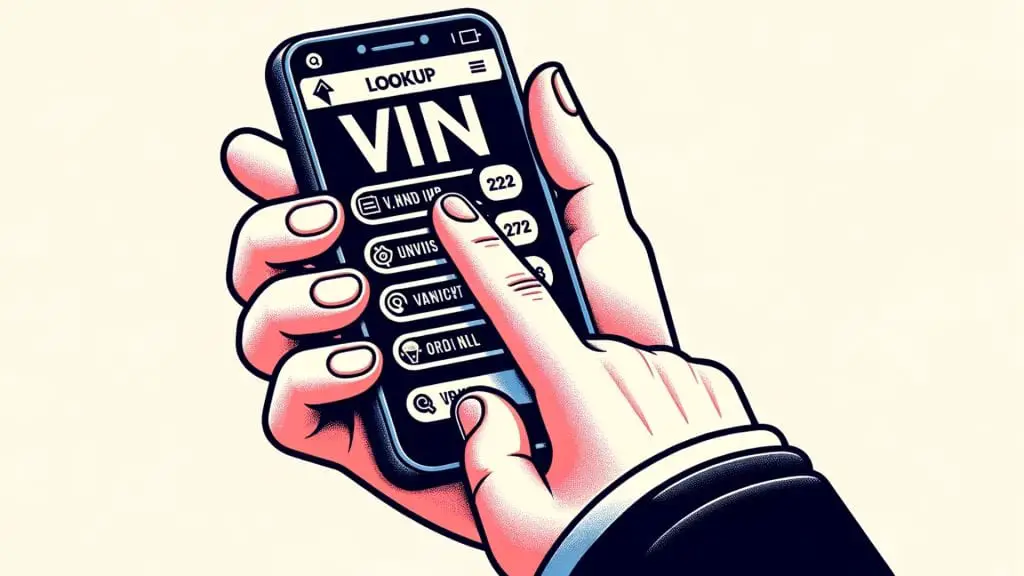
Here are some options for getting a free window sticker using the VIN:
1. Request from dealership
Contact the dealership where the car was originally sold and provide the VIN. Many will print out a copy for free.
2. Manufacturer’s website
Create an account on the car company’s website and enter your VIN. Some brands provide free access to window stickers.
3. WithClutch.com
This free VIN lookup tool can sometimes have access to original window stickers. Enter the VIN and your email to see if they have yours.
4. Online forums
On enthusiast forums for specific car makes, owners sometimes share or request window stickers. Search the forums for your car’s make and model.
Other Free VIN Lookup Sources
Even without the window sticker, you can lookup basic specs via the VIN on these free sites:
- NHTSA – Federal VIN decoder shows manufacturer, year, make, model, trim, etc.
- VINCheck.info – Provides vehicle history data like accidents, title changes, and repair records.
Relevant Article to Read: Lookup Vin Scam
Paid Options for Window Sticker Lookup
If the free sources don’t pan out, here are some paid services for accessing window stickers:
- MonroneyLabels.com – The leading provider of authentic reproductions of automaker window stickers. Covers most makes, models, and years. Stickers cost $5 to $9.
- WithClutch.com – Offers window stickers starting at $5 when not available for free. Also has hard-to-find discontinued domestic models.
- Car manufacturer – Some automakers like Ford let you buy window stickers directly for collector value. More expensive at $50+, framed and shipped.
Find the Original Window Sticker by Manufacturer
- Ford: http://fordwindowsticker.com/
- Toyota: https://www.toyotanation.com/threads/original-build-sheet-or-window-sticker.1699728/
- BMW: https://m.youtube.com/watch?v=jnSPO6kwuYw
- Chevrolet: https://www.gm-trucks.com/forums/topic/261990-look-up-your-trucks-window-sticker/
Contents of a Window Sticker
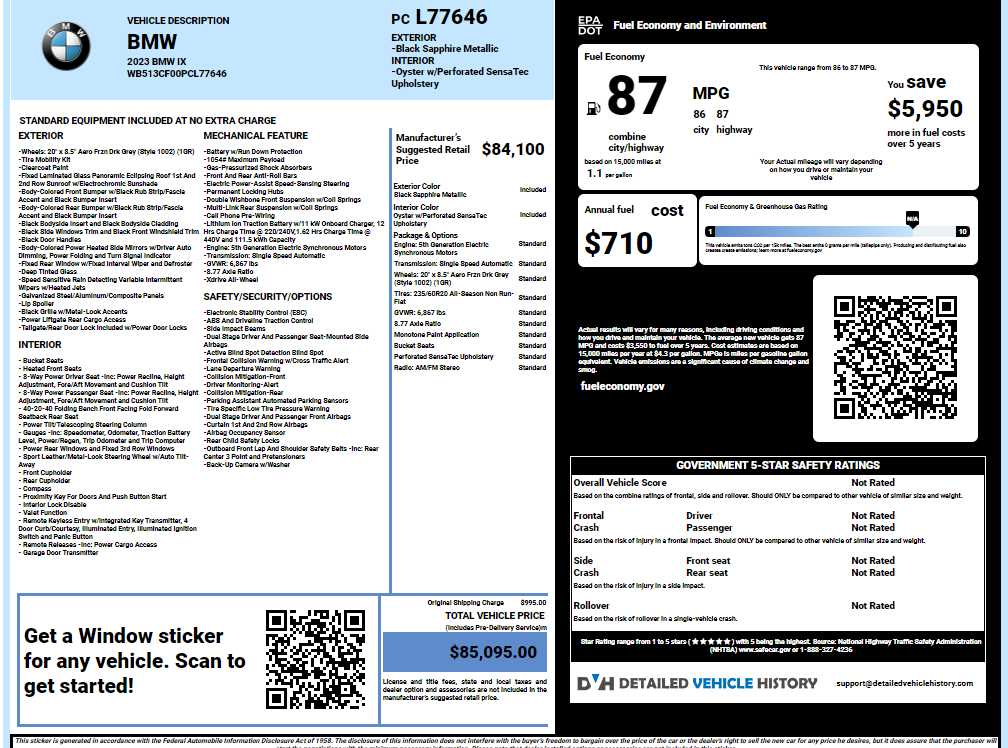
Let’s look at why the window sticker/monroney label matters in the first place. Here’s an overview of what you’ll find within the sticker itself:
A Monroney label, also known as a window sticker, is a federally mandated label that must be affixed to all new cars sold in the United States. It provides detailed information about the vehicle, including:
Vehicle Specifications
- Make, model, trim level, and VIN Number
- Engine and transmission specifications
- Standard equipment and warranty details
Pricing Information
- Manufacturer’s Suggested Retail Price (MSRP)
- Pricing for optional equipment and packages
- Transportation/destination charges
Fuel Economy and Environmental Impact
- City and highway fuel economy ratings from the EPA
- Greenhouse gas and smog emissions ratings
- Estimated annual fuel costs
- For electric/hybrid vehicles: MPGe (miles per gallon equivalent), kW-hrs per 100 miles, and annual electricity cost
Safety Ratings
- Crash test ratings from the National Highway Traffic Safety Administration (NHTSA).
Parts Content
- Percentage of domestic and foreign parts used in the vehicle’s construction.
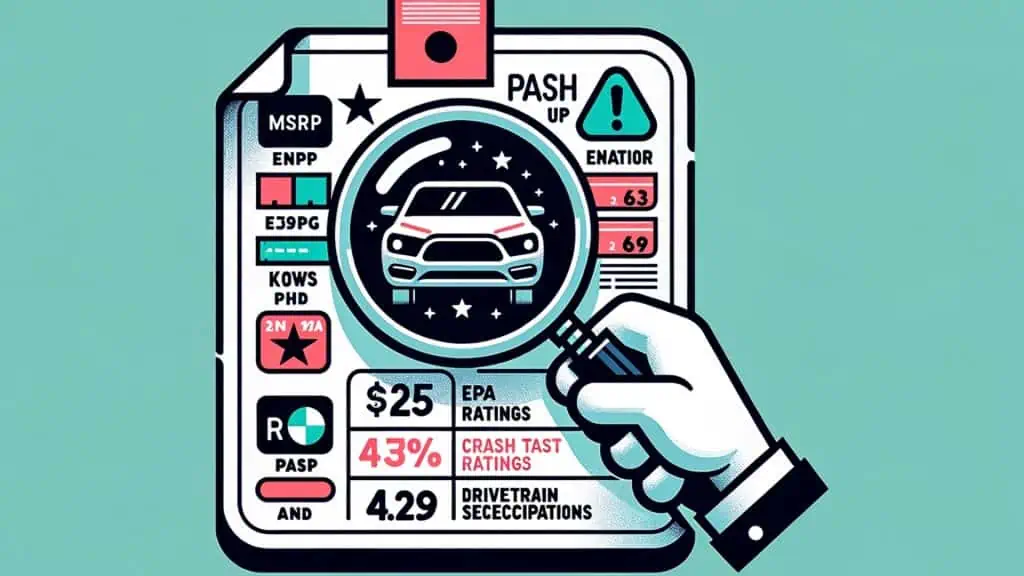
Why You Need the Window Sticker for a Used Car
For used car buyers, having the window sticker lets you:
- Verify the car has the options and equipment you want
- Confirm the condition matches the original specs
- Negotiate a fair price based on the original MSRP and discounts
As a used car seller, providing the window sticker shows buyers you’re transparent and gives them confidence in your asking price.
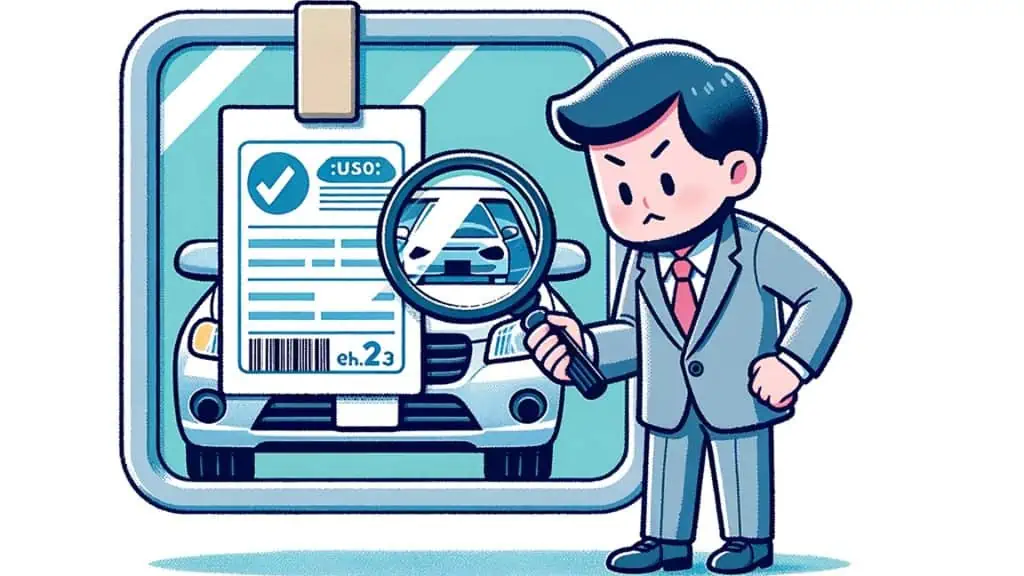
Where to Find the VIN
To look up a window sticker, you first need the car’s unique 17-character VIN. Here are the common locations where you can find your vin:
- Driver’s side dashboard near the base of the windshield
- Driver’s side door jam, on a sticker with tire pressure info
- Vehicle title
- Registration paperwork
Once you have the VIN, you’re ready to obtain the window sticker.
Other Related Articles: How to Decode a VIN Number
Frequently Asked Questions
Why were window stickers created?
Car window stickers were created in the 1950s to combat arbitrary vehicle price changes by dealerships and provide transparency for car buyers. Senator Mike Monroney sponsored the Automobile Information Disclosure Act in 1958 which mandated these “Monroney stickers” be displayed on all new vehicles for sale.
What was the purpose of introducing window stickers?
The main purpose was to standardize pricing information and equipment listings on all new cars in order to prevent fraud and overcharging. This gave consumers consistent details to make informed purchasing decisions.
What law made window stickers a requirement?
The Automobile Information Disclosure Act passed in 1958 made it mandatory for all dealerships to display window stickers on new cars put up for sale. This groundbreaking law was sponsored by Senator Mike Monroney.
What information must be included on window stickers?
The law regulates that certain categories of vital information must be present, including MSRP, all standard and optional equipment, crash test ratings, fuel economy estimates, engine specifications, manufacturing details, and more.
Have the laws about window stickers been updated since 1958?
Yes, there was an update in 2013 that mandated additional details related to alternative fuels and propulsion systems must be included on the stickers for certain electric, hydrogen, hybrid, and other vehicles.
Summary
So in summary, obtaining an original window sticker for any used vehicle is easy and free using the VIN lookup methods outlined here. With this vital information in hand, you’ll be well-equipped to buy or sell any car with greater confidence.
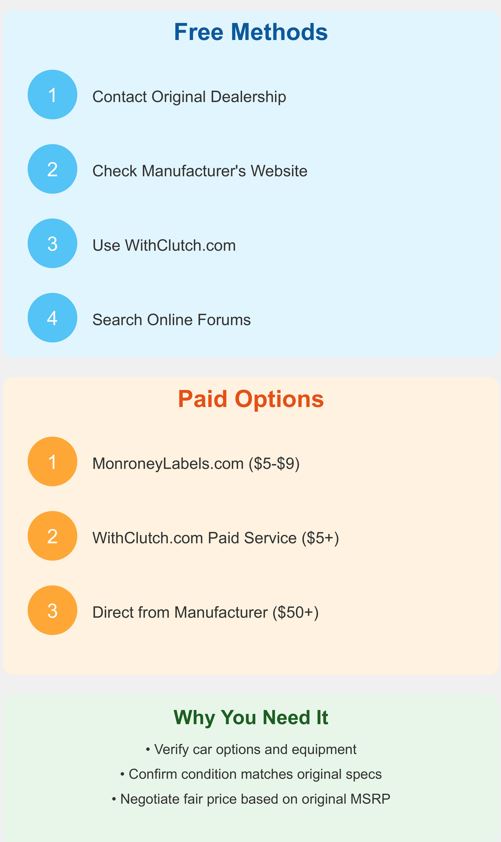
Sources For This Article
- https://www.clearvin.com/en/dealer/window-sticker/
- https://blog.salvagebid.com/how-do-i-get-a-window-sticker-for-my-car/
- https://detailedvehiclehistory.com/window-sticker
